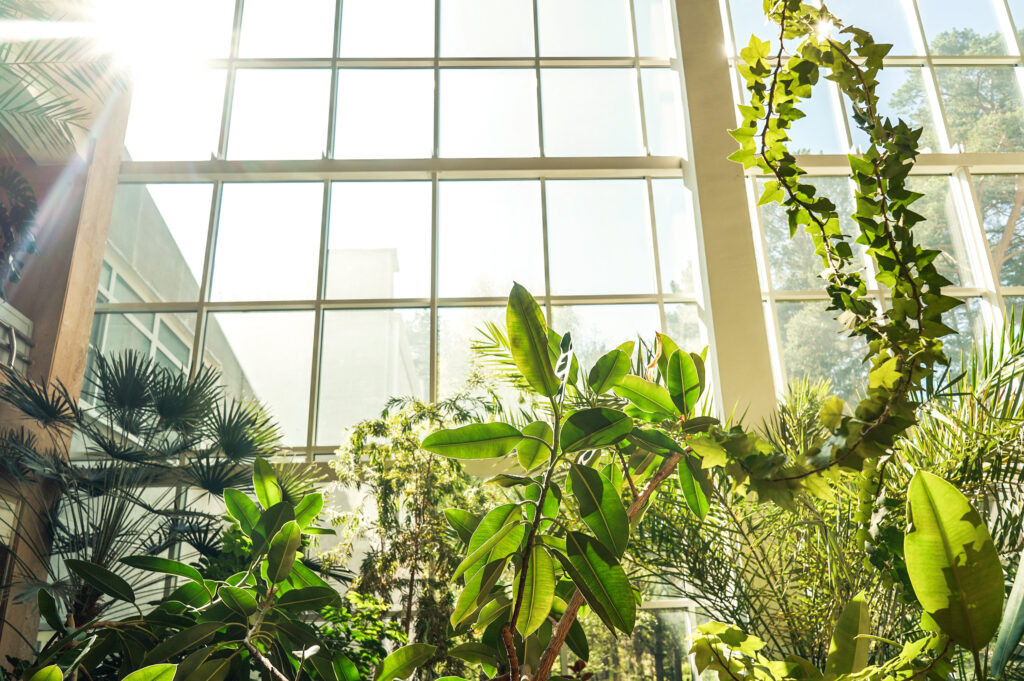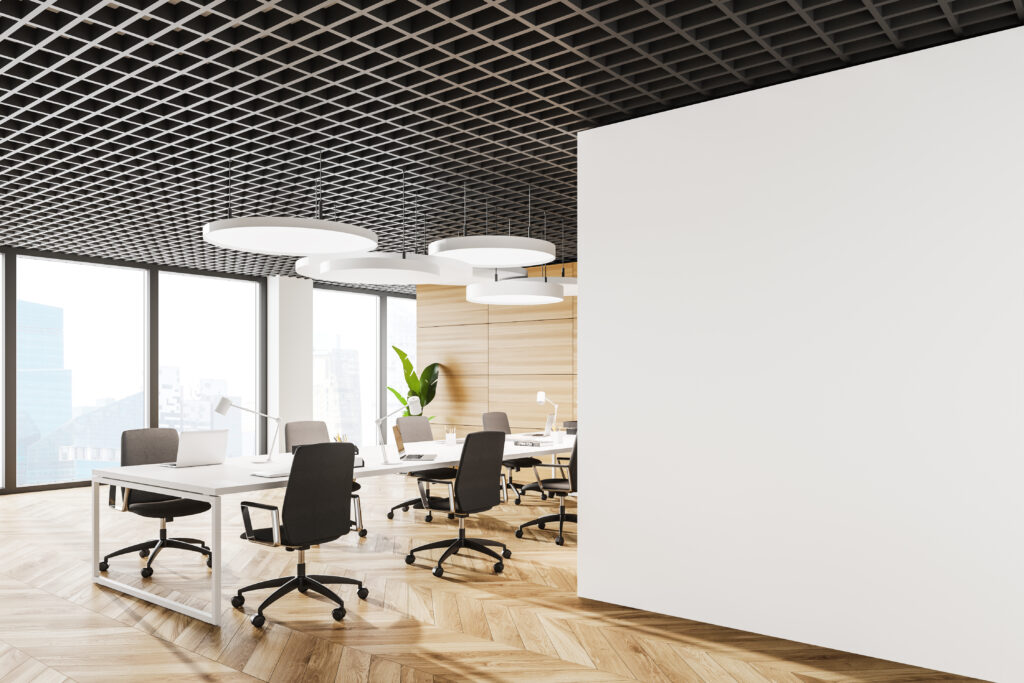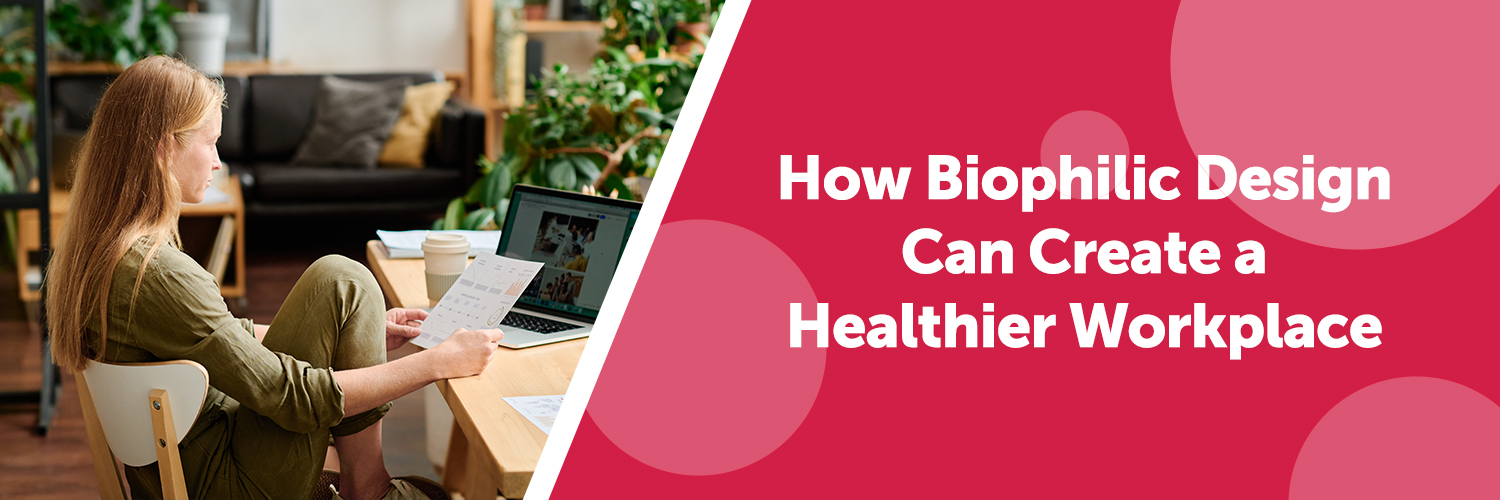All healthy offices should be designed in such a way as to promote the health and well-being of their employees, but what exactly does that entail? Biophilic design aims to create spaces, whether in the corporate, education, or hospitality markets, which mirror the principles found in nature—from lighting and temperature control to the positioning of furniture and elements like windows, plants, and water features. Here are some examples of biophilic design in the workplace, as well as information about how it promotes work-life balance, productivity, employee satisfaction, and more.

What is Biophilic Design?
Biophilia is the innate tendency to seek out natural environments. The term was coined by Erich Fromm in 1964. Today, biophilic design is a growing design trend being used to create buildings and workplaces that mimic nature and provide opportunities for people to connect with the natural world. Biophilic design can involve anything from green roofs, plant walls, plants on desks, etc. With more and more research showing the benefits of an indoor environment that incorporates nature, it seems there’s never been a better time for designing buildings with our natural surroundings in mind.
What Does It Have To Do With The Workplace?
Nature has many benefits including reduced stress levels and increased productivity and creativity. A workplace that incorporates plants, green spaces or natural elements can help create a healthier and more productive work environment. Biophilic design has been shown to reduce the amount of stress in the workspace and promote creative thinking and collaboration among co-workers. They also improve employee mental health by providing access to nature through walking paths and window views in office buildings. Employees have reported an increase in focus, better moods, and enhanced creativity due to exposure to nature and natural elements. Employees have noted that this kind of exposure at work resulted in improved sleep quality and reduced fatigue.
Direct and Indirect Exposure
Exposure to elements has been shown to improve mood and productivity. Studies have found that workers exposed to indirect natural light slept better and reported less stress than those exposed to artificial light. Indirect natural light can be created by adding windows or skylights to your workplace. Plants, a more direct exposure, have also been shown to make people happier, healthier, and more productive. Adding plants not only gives you an opportunity for direct exposure but also improves air quality and reduces airborne dust particles.
Natural Light Sources

Biophilic design encourages the use of natural light sources like skylights or floor to ceiling windows. Natural daylight exposure has been shown to increase productivity by up to 37% with sunlight exposure playing a significant role in regulating an individual’s circadian rhythm. The blue wavelength of the light is also important for mood regulation, and it helps suppress melatonin release, which helps people stay alert. Studies have shown that when employees are exposed to natural light during daytime hours they are more productive than those who work in artificial lighting.

Outdoor Spaces
Natural materials work well for both indoor and outdoor environments, and outdoor spaces are valuable in the modern workplace. Not only can employees, clients, and customers use these outdoor areas as break spaces, but they can also be used as workspaces. Regular exposure to Vitamin D can help stay healthy and focused. Remember to work with a representative to find the best furniture for the outdoors, as having rugged, strong outdoor furniture is imperative. It must be able to stand up to rain, wind, sun, and snow.
Water Features and Plants
Plants create an environment that inspires creativity and supports better health because they provide fresh air and reduce stress levels by stimulating the senses of smell and sight. The benefits don’t stop there – plants also improve productivity as they can improve concentration and offer alternative resting areas to keep people from sitting for prolonged periods of time. Studies show that more plants in the workplace could be worth over $400 million dollars in productivity gains each year! To help make your office greener, water features like fountains or waterfalls are great for adding natural sounds and cool air during warm months to lower overall indoor temperatures. By choosing plants that are native to your region, you can also save money on HVAC costs by decreasing energy use. For example, ferns do well in cooler climates while cacti do well in warmer climates!
Gateway works with you to find commercial furniture and fixtures to complement your Biophilic Office Design!

